NORTH CEILING
CENTRE CEILING
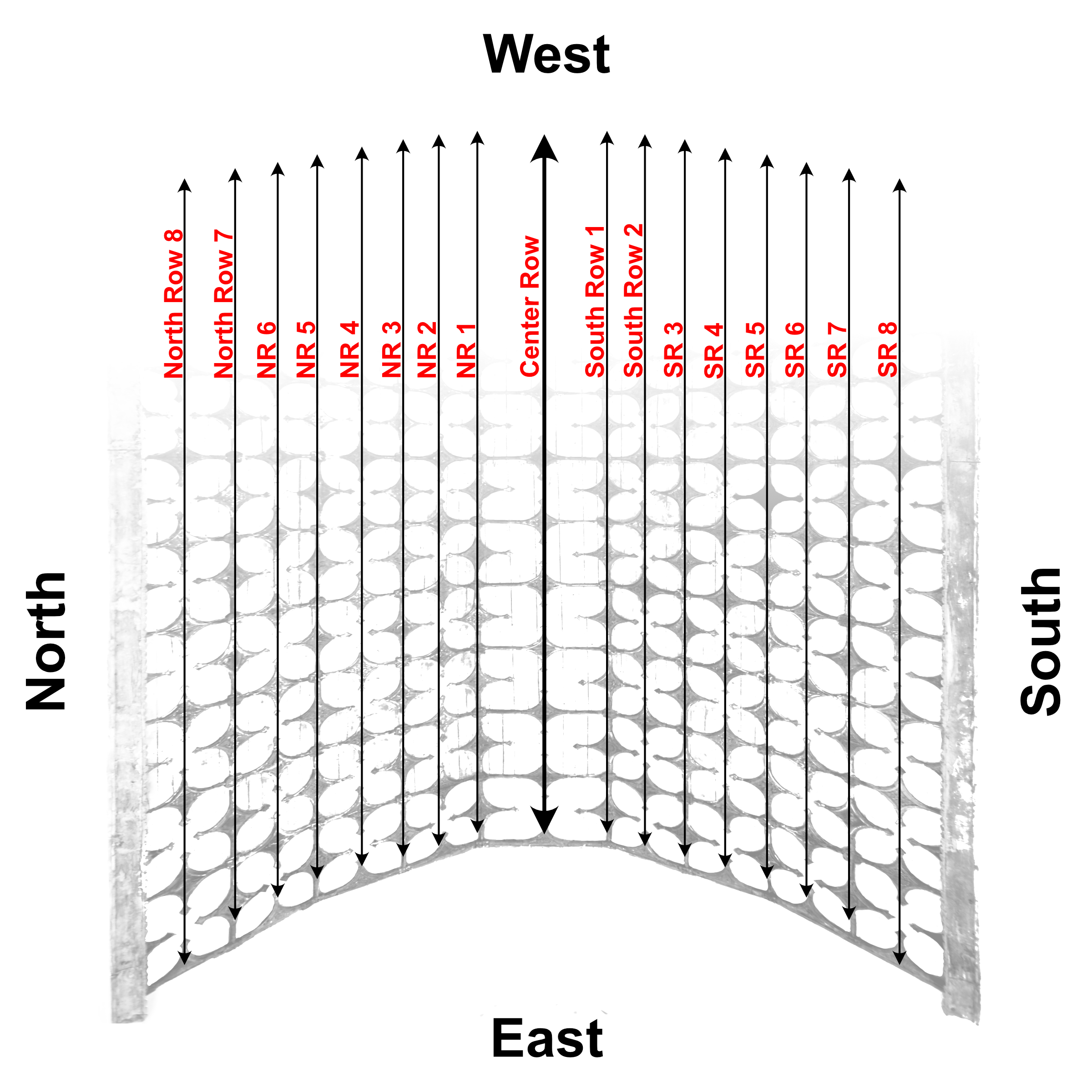
All the authorities on Suffolk churches date it to the early 16th century (Cautley (1938), Mortlock (2009), Bettley and Pevsner, (2015). This is confirmed by dating evidence from the clothing depicted on two of the bosses, the figure emerging from a shell, shroud or void (NR4 CL7) who is wearing a ruff-edged collar, and the depiction of a sciapod (SR4 CL6) who sports an early 16th century beard and tunic. These have been dated to later than 1510 (Peverley, 2022).
The display of heraldry in the roof (see later) is that of the Stafford family, who were the Dukes of Buckingham, and Lords of Desning manor in Gazeley. The last Stafford Lord here was executed for high-treason in 1521, making it very unlikely that the ceiling could have been installed after that date. This gives a likely construction date of circa 1510-1521.
Since before 1066 the parish and church of Gazeley were part of the holdings of a small monastery at Clare. The monks derived income from the tithes on all the major crops grown in the parish. The Prior, as head of the monastery ,was the Rector and had the right to appoint a clergyman (a vicar) to take services in the church, which is why the incumbent at Gazeley is still technically a Vicar.
Part of the Rector’s responsibility in every church in England, was the upkeep of the chancel, which continued until 1936.
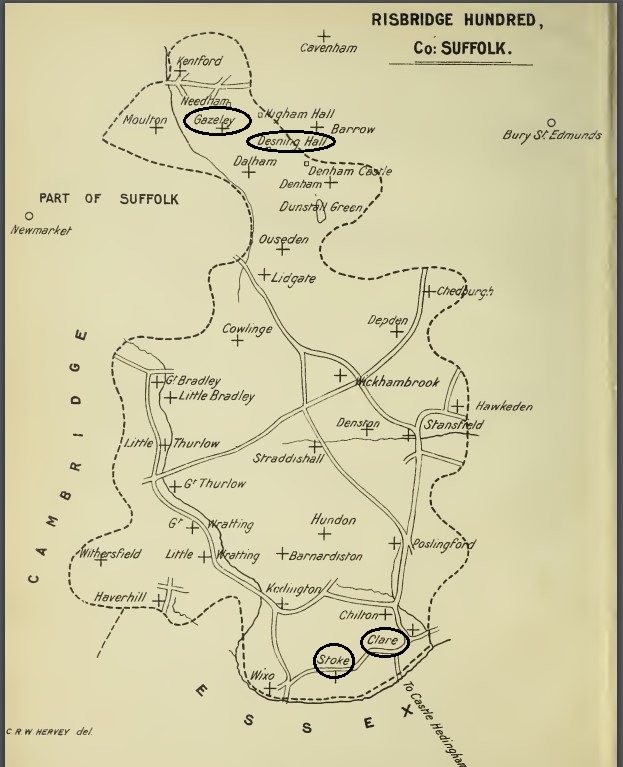
Denham Parish Registers 1539-1850
In 1124 the monastery, dedicated to St John the Baptist, was moved from Clare Castle to Stoke by Clare.
The Priory was dedicated to St John the Baptist and the monks ensured that their chancel acknowledged their patron saint, even though the church was dedicated to All Saints.
Hence several of the bosses tell the important events in the life and death of John, which can be found in Mark Ch.6v.v.22-28 and Matthew Ch.14vv.6-12
1: John points to Jesus as the Lamb of God (John Ch.1v.29) (NR4 CL8)
2: The Angus Dei (Lamb of God), with the flag of Resurrection (SR7 CL4)
3: The IHC monogram for Jesus (SR8 CL10)
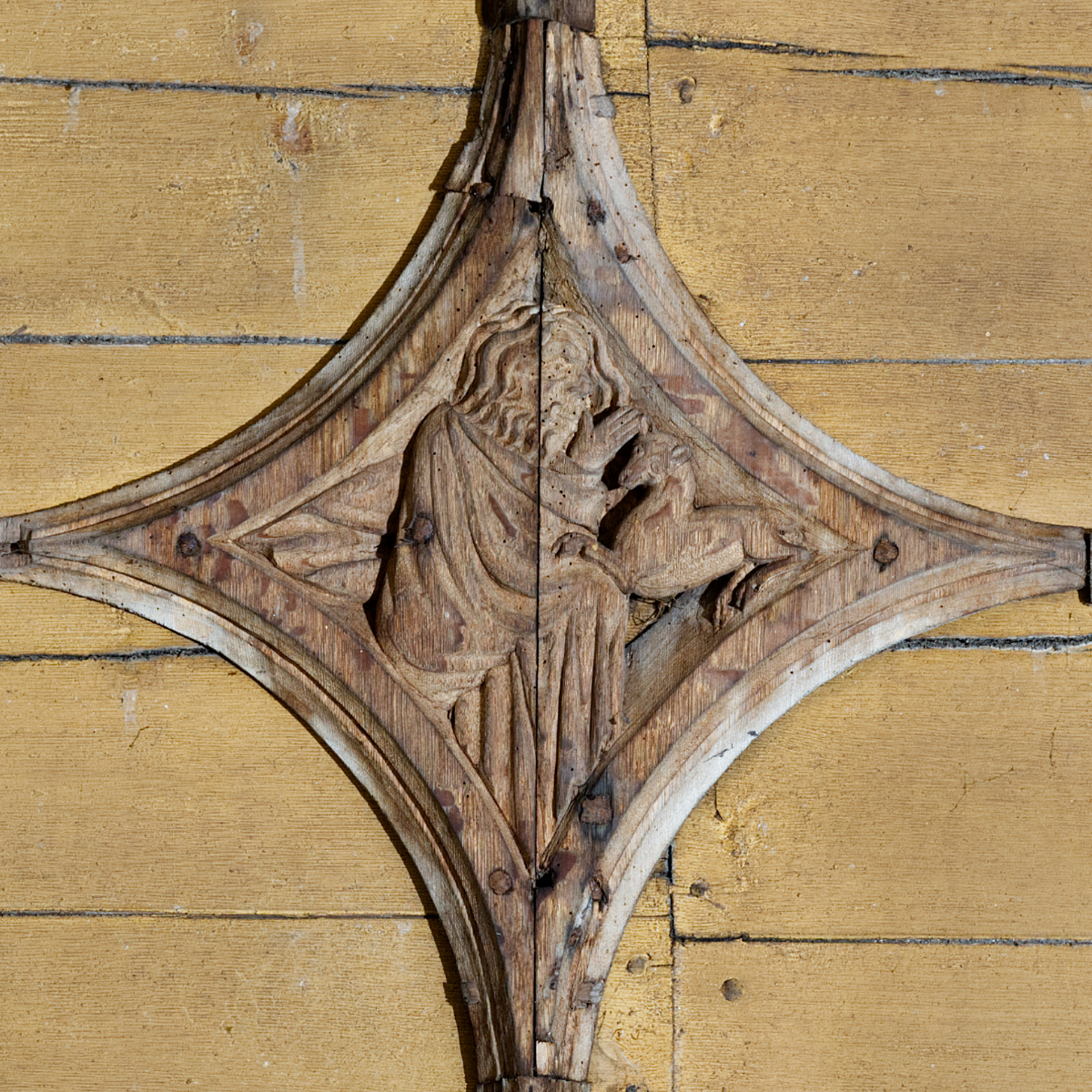
John points to Jesus as the Lamb of God (John Ch.1v.29)
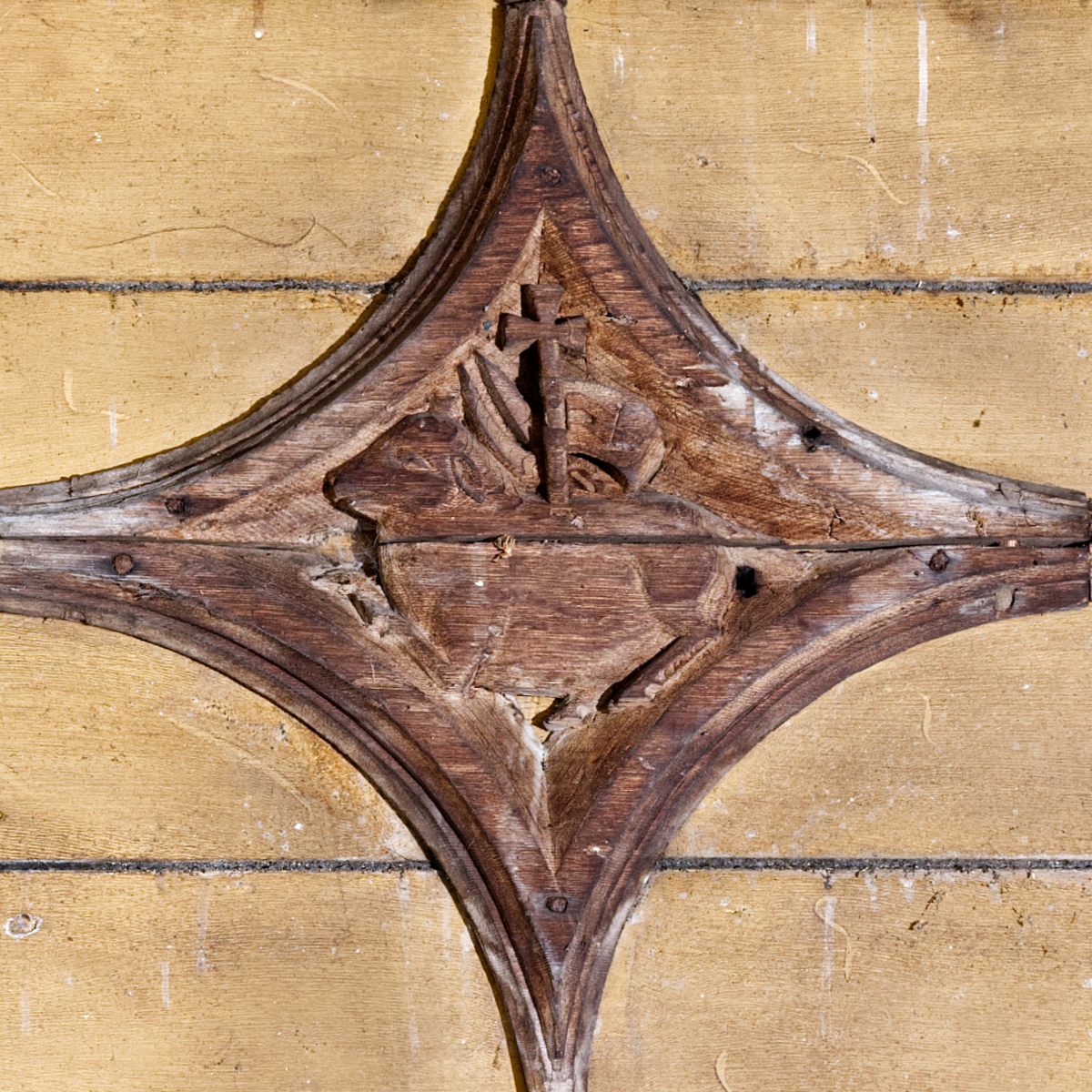
The Angus Dei (Lamb of God), with the flag of Resurrection
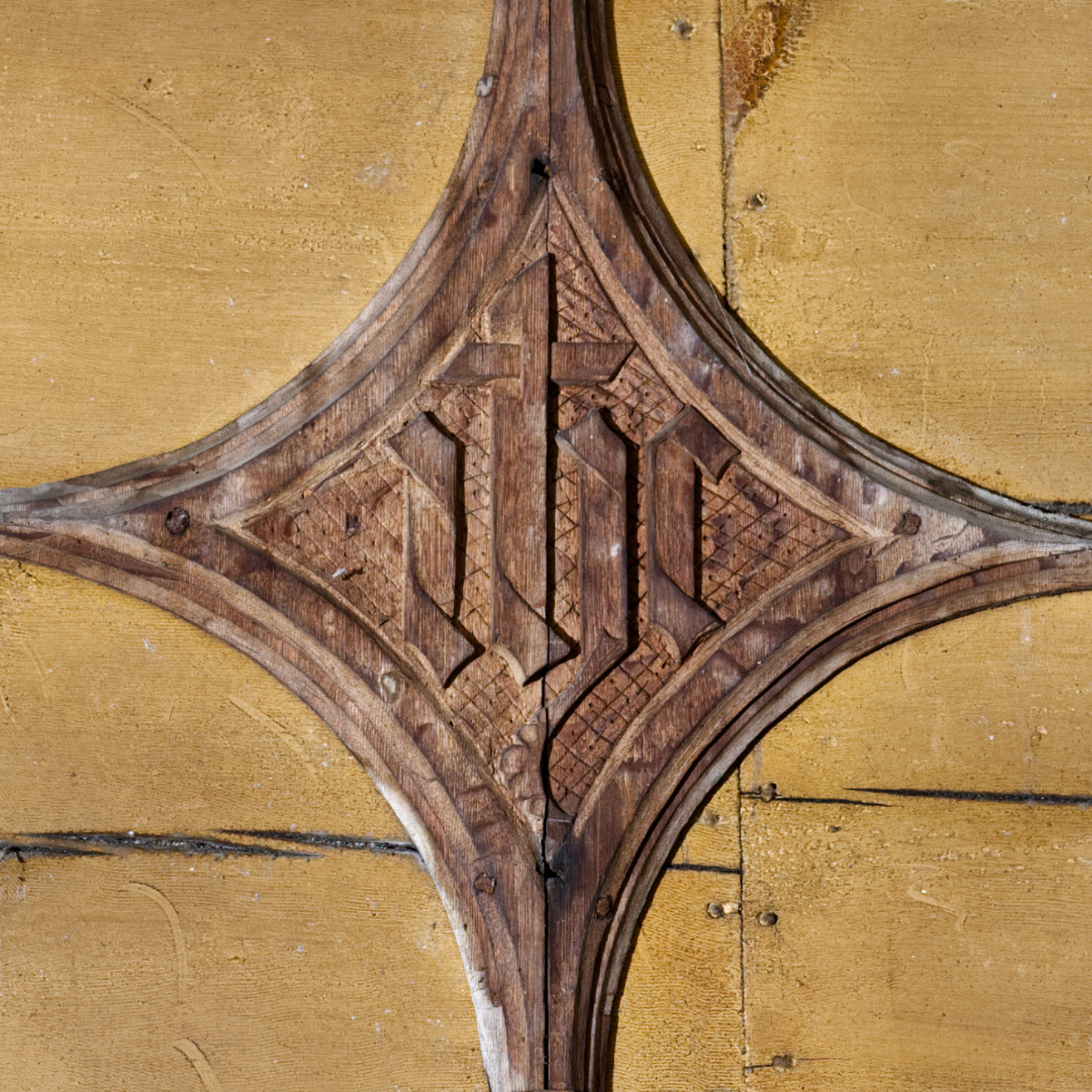
The IHC monogram for Jesus
4: Salome who danced for King Herod and then demanded John’s head (She is the only female depicted on the roof, with her veiled headdress and hair restrained in circular cauls (NR7 CL10).
5: King Herod (NR6 CL8)
6: John the Baptist’s head on a platter or charger (NR5 B8)
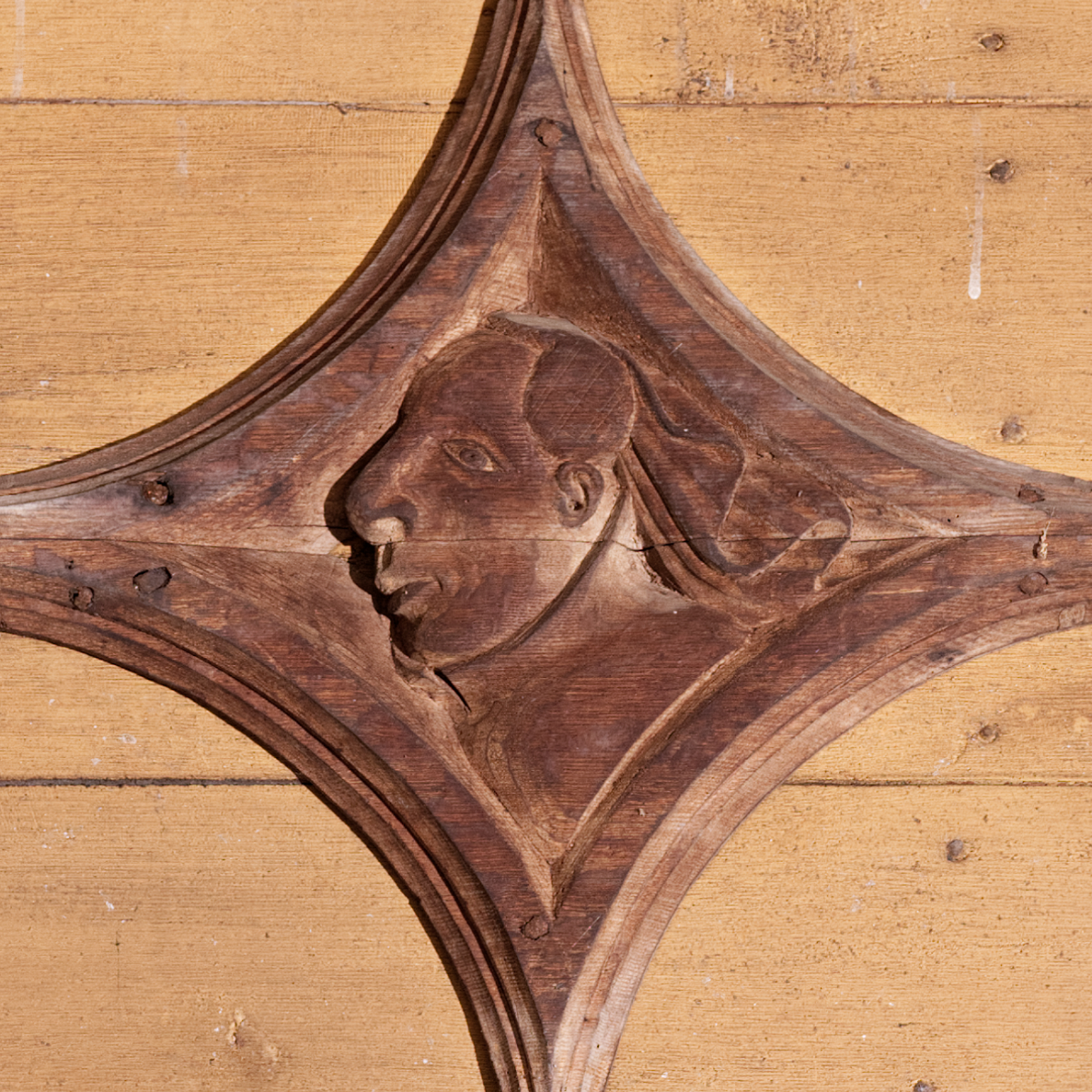
Salome who danced for King Herod and then demanded John’s head (She is the only female depicted on the roof, with her veiled headdress and hair restrained in circular cauls
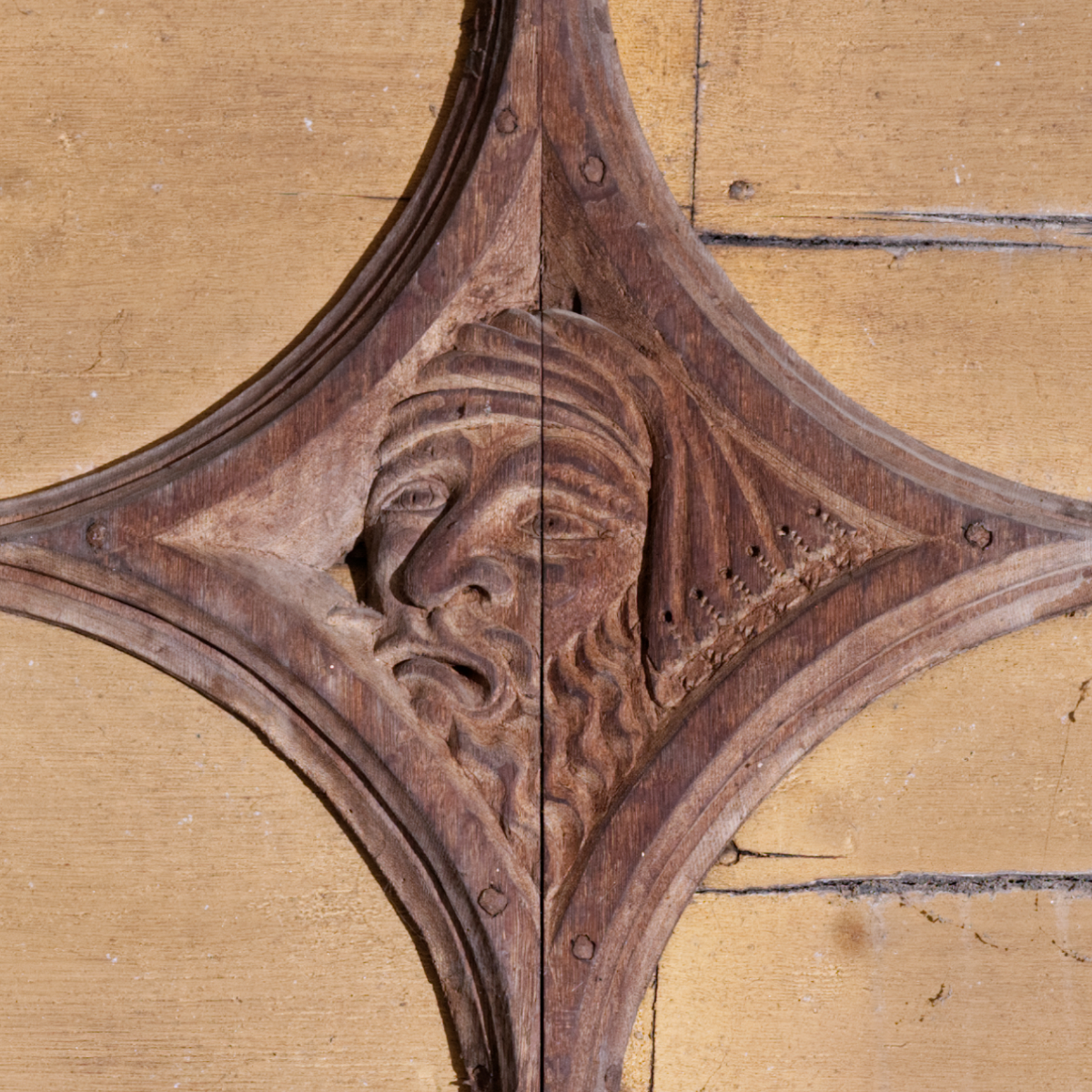
King Herod
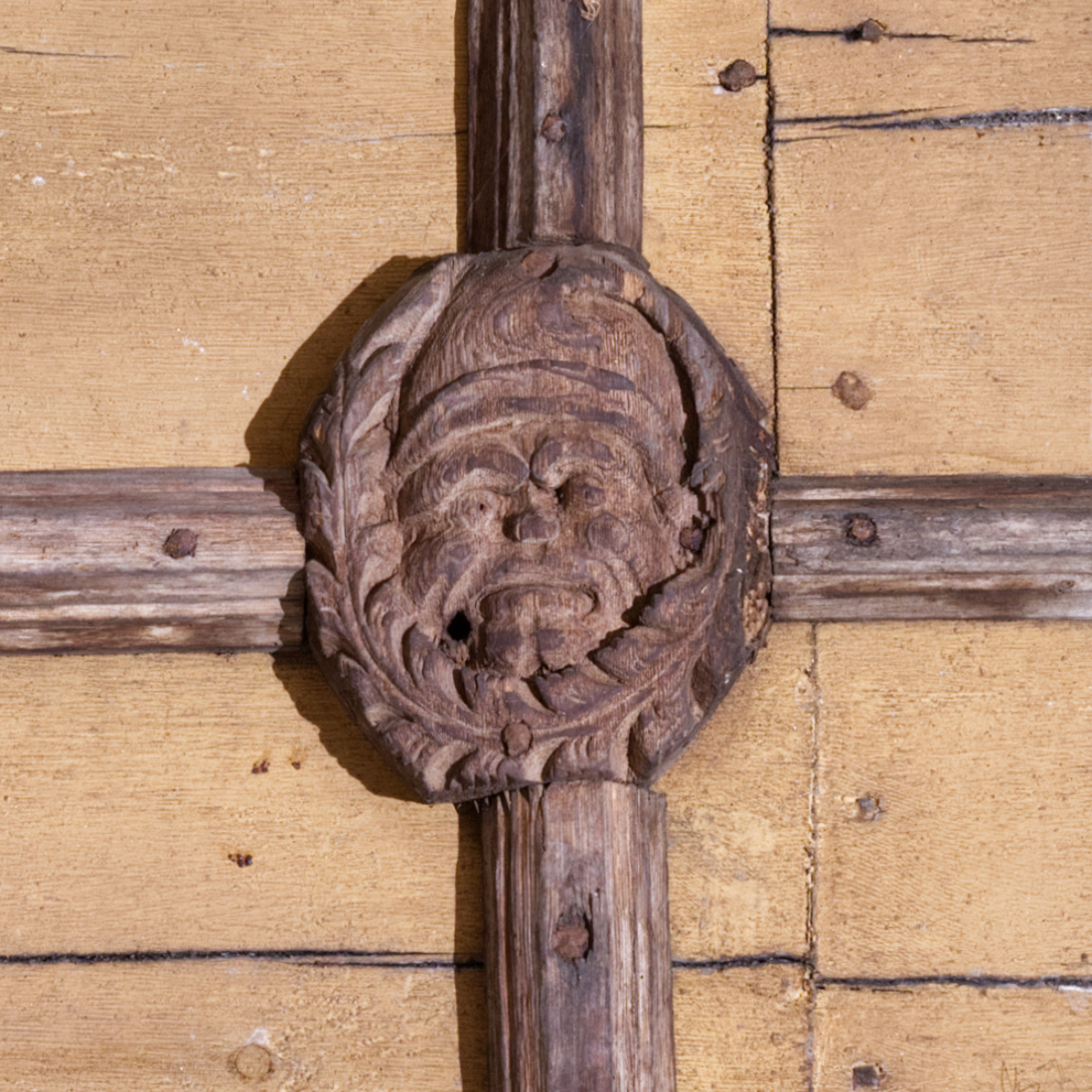
John the Baptist’s head on a platter or charger
7: The Asperges may be intended as a reminder of baptism as the aspergillum is used to sprinkle holy water on the congregation. (SR6 CL3)
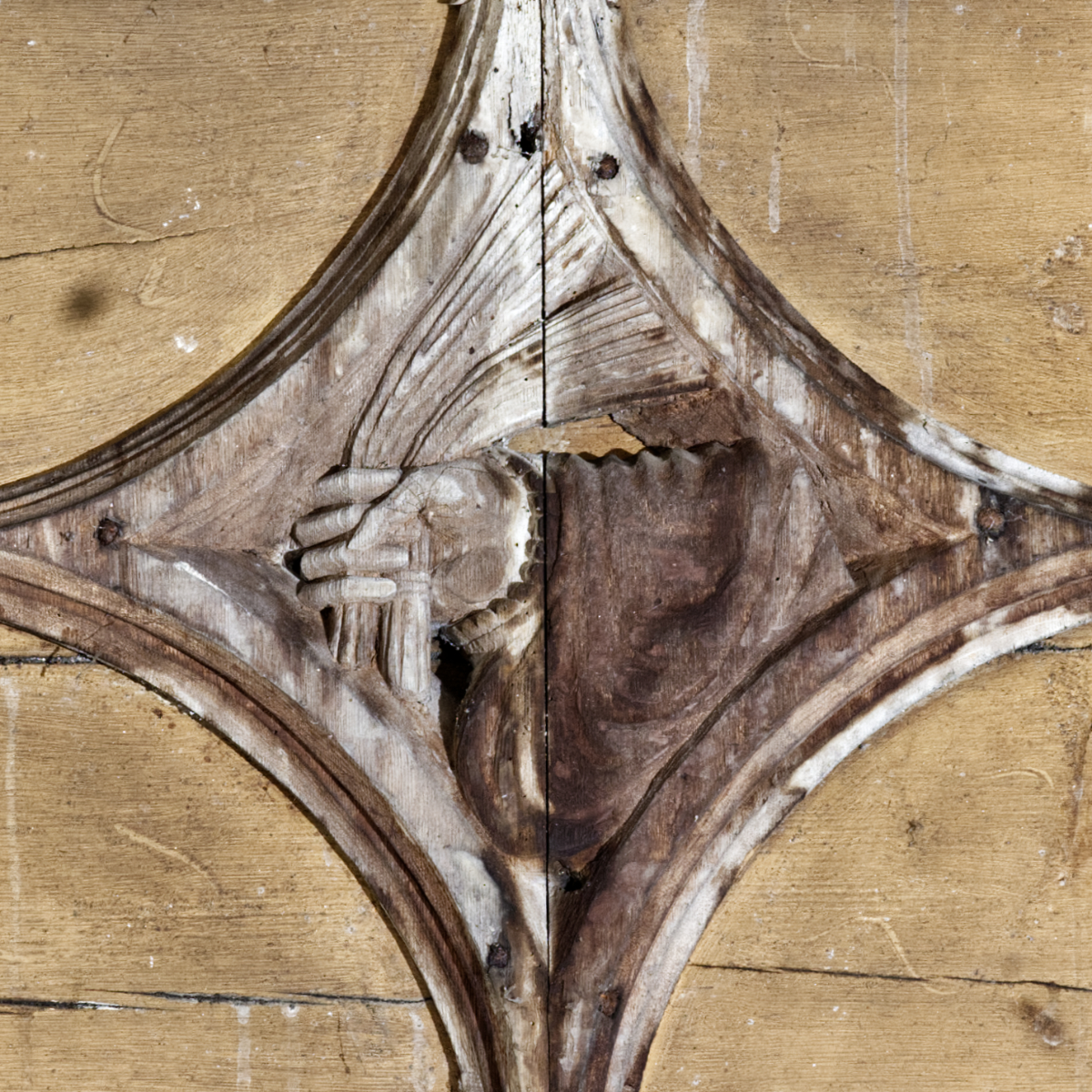
The Asperges may be intended as a reminder of baptism as the aspergillum is used to sprinkle holy water on the congregation.
In Domesday Book (1086) there were three manors in Gazeley, later called Gazeley, Desning, and Rectory. All three were held by the de Clare family of Clare Castle, where the early monastery was built
Desning was later held by the Stafford family, Dukes of Buckingham 1347-1521. The Stafford coat of arms was a chevron, derived from the de Clare’s, to which a knot was added, above the shield, in 1444 (SR4 CL9 and SR5 CL9). Both of these appear on the roof, together with eight other Stafford heraldic badges:
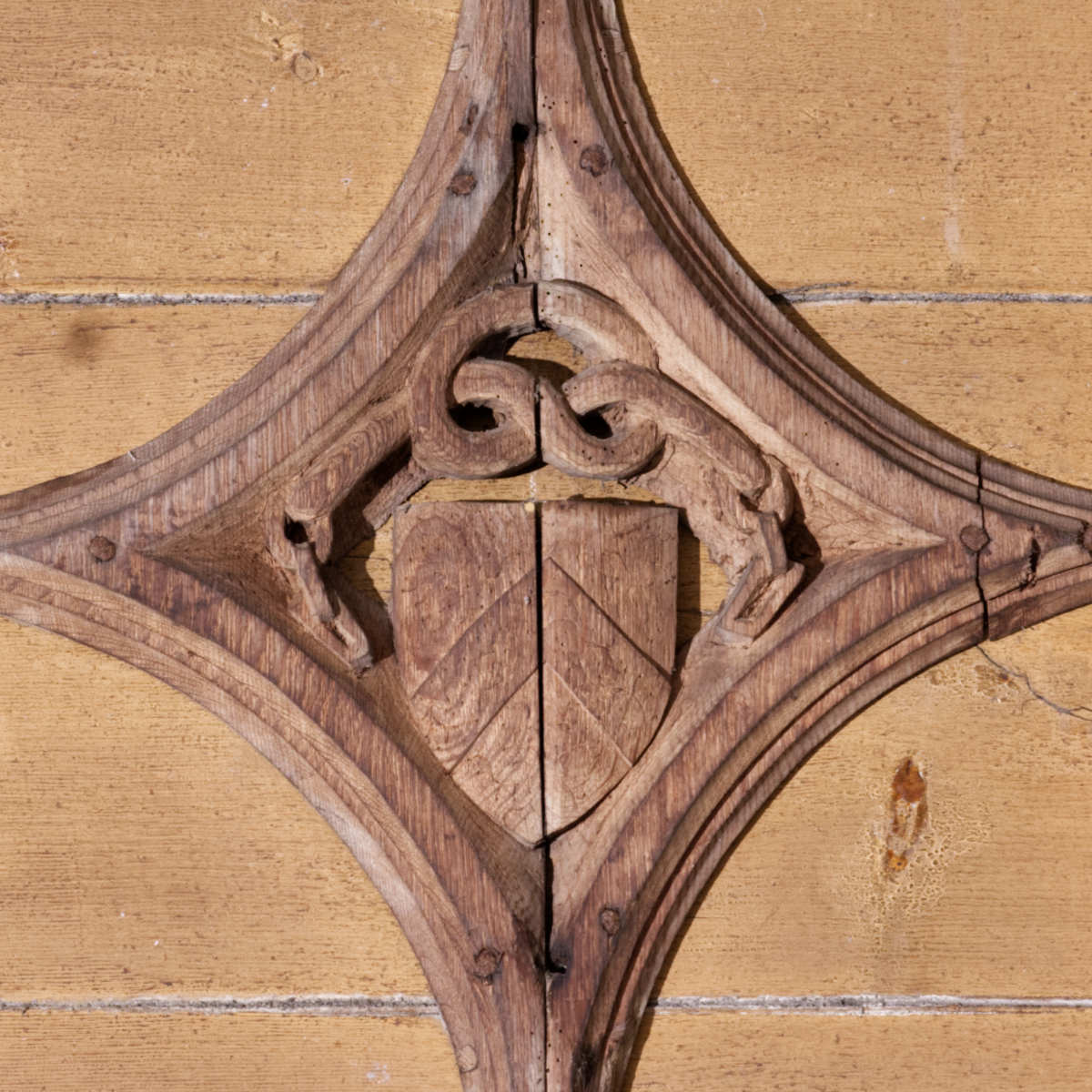
The Stafford coat of arms was a chevron, derived from the de Clare’s, to which a knot was added, above the shield, in 1444.
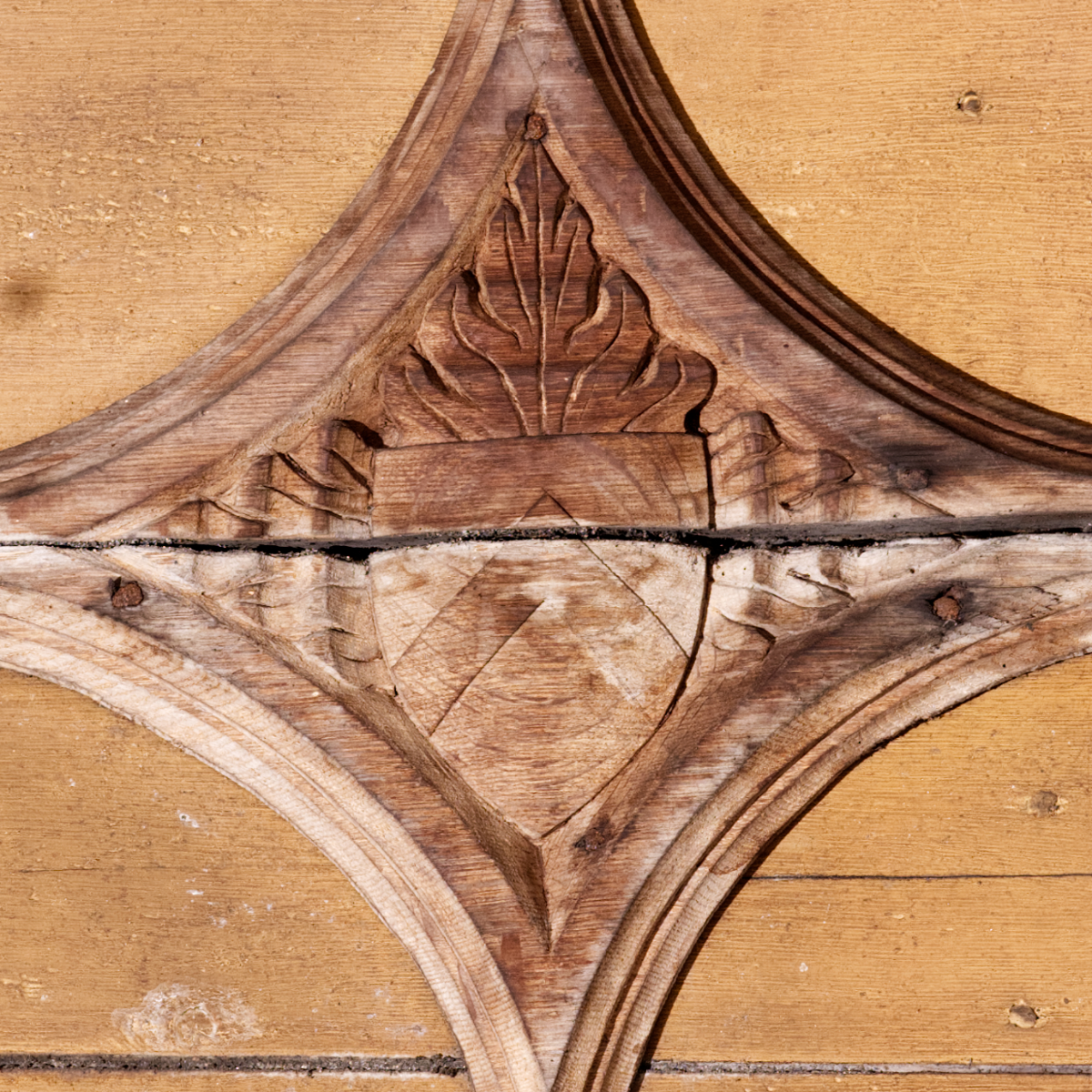
A Stafford heraldic badge
1. the lion passant (SR2 CL8),
2. antelope (NR5 CL9)),
3. eagle (SR1 B2),
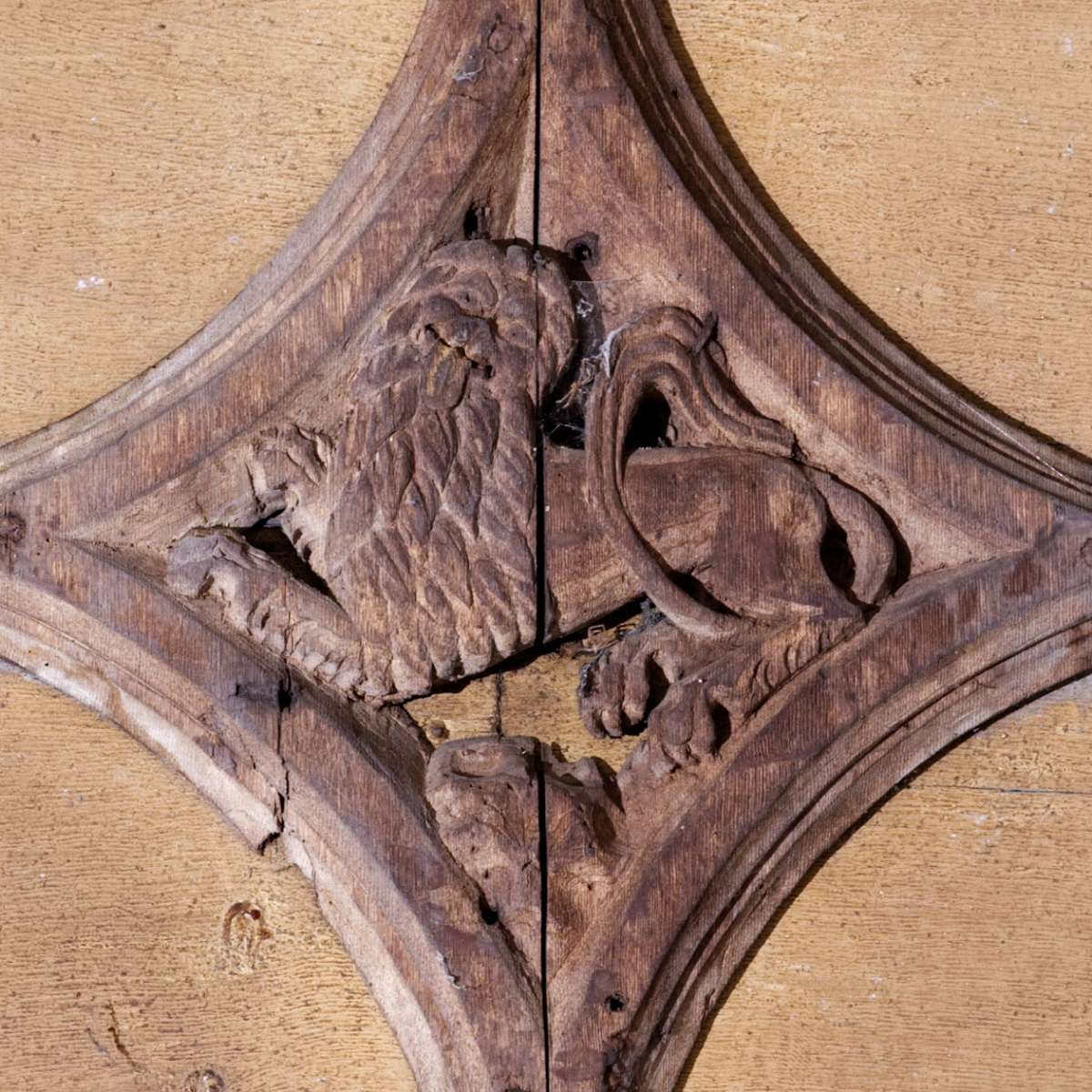
the lion passant
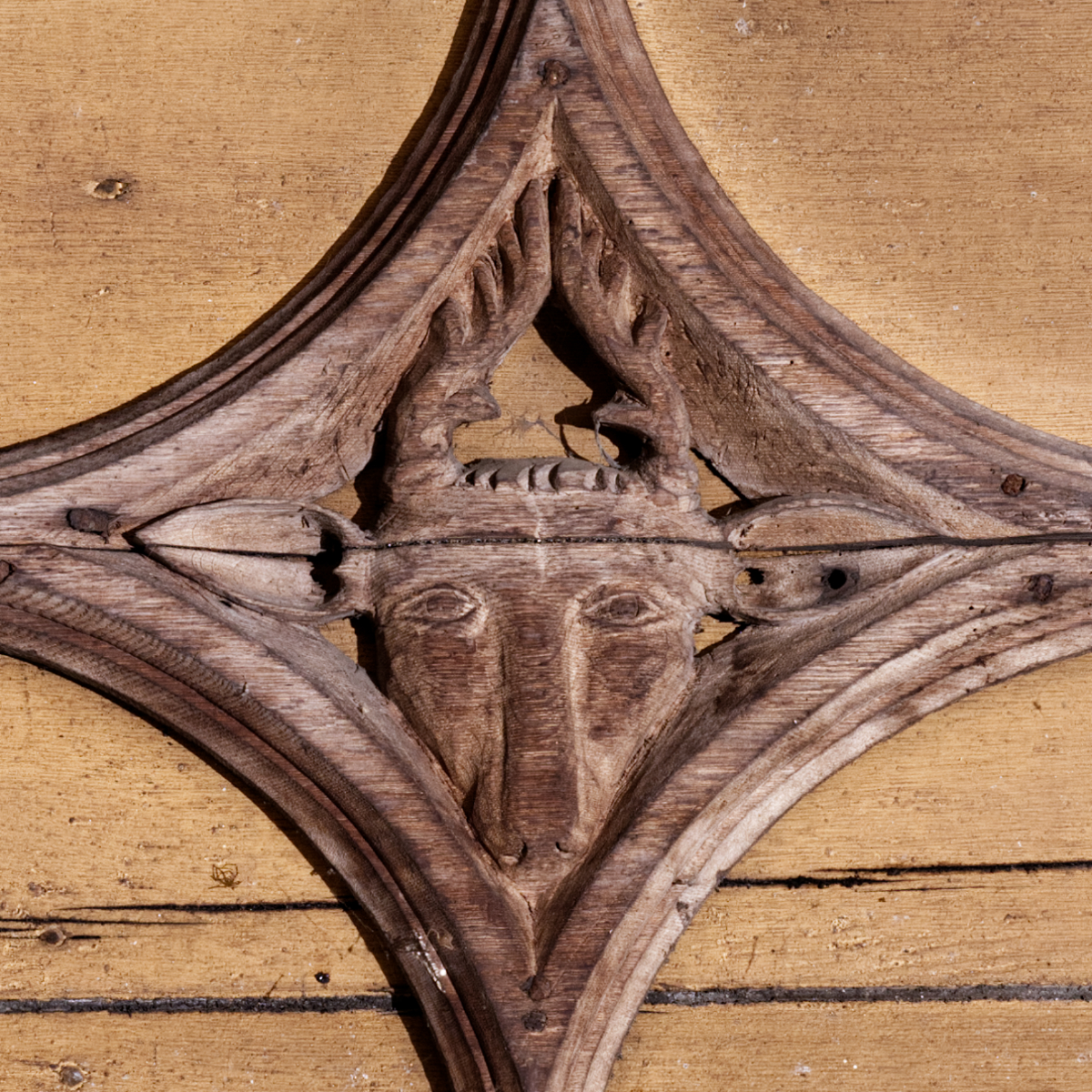
Antelope
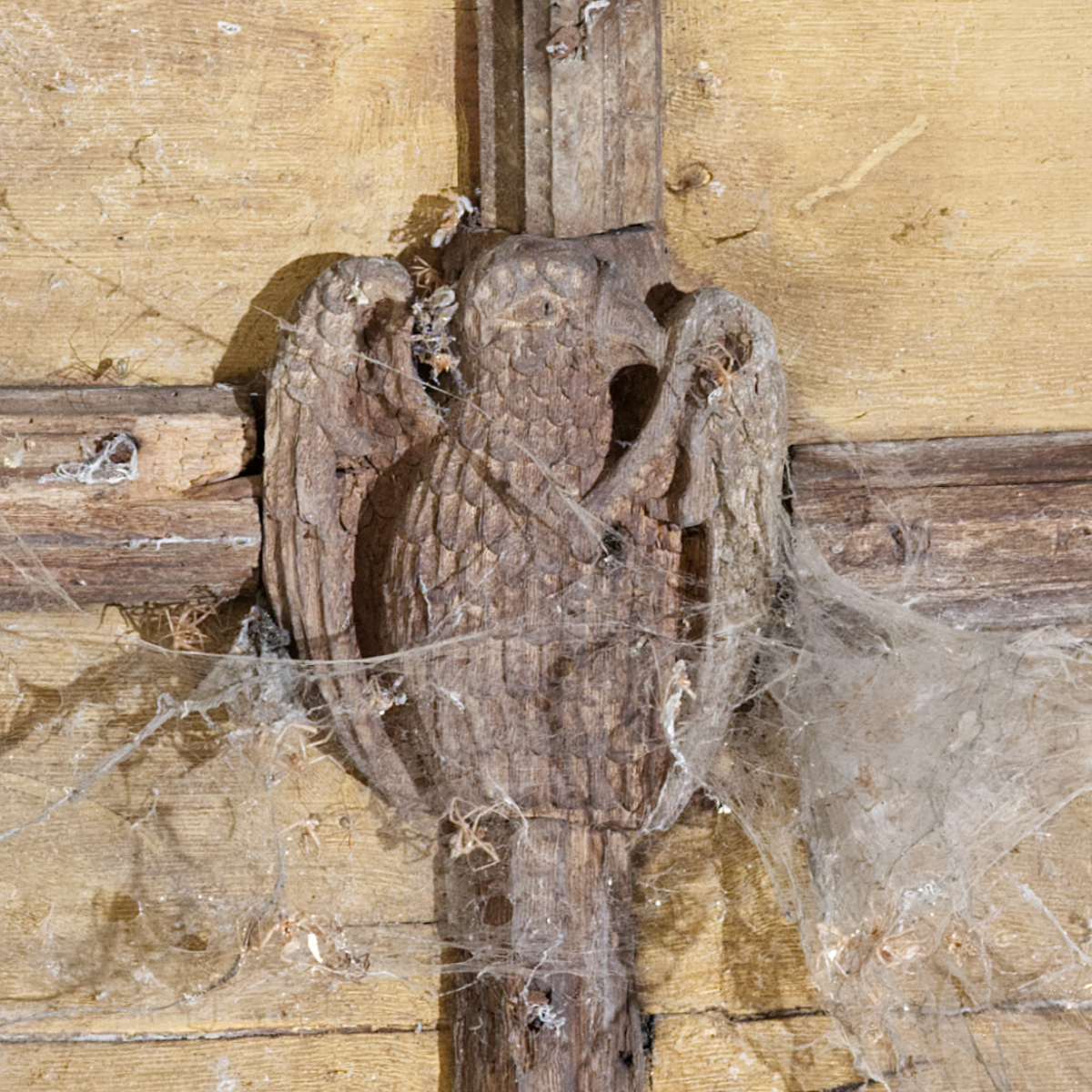
Eagle
4. swan gorged with a Ducal coronet and chain around its neck(NR7 CL1),
5. gryphon (CR CL6)
6. dragon (NR8 CL4)
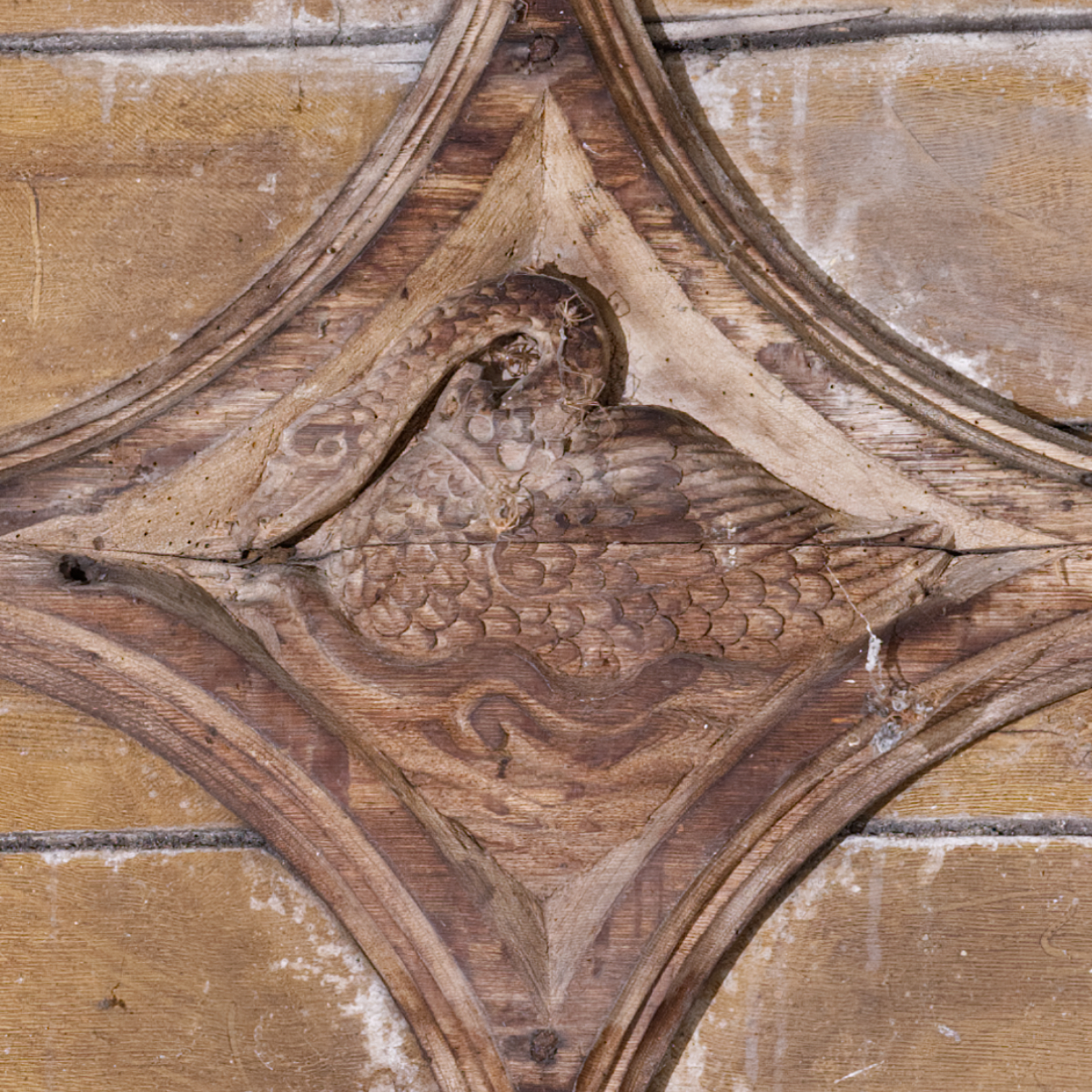
Swan gorged with a Ducal coronet and chain around its neck
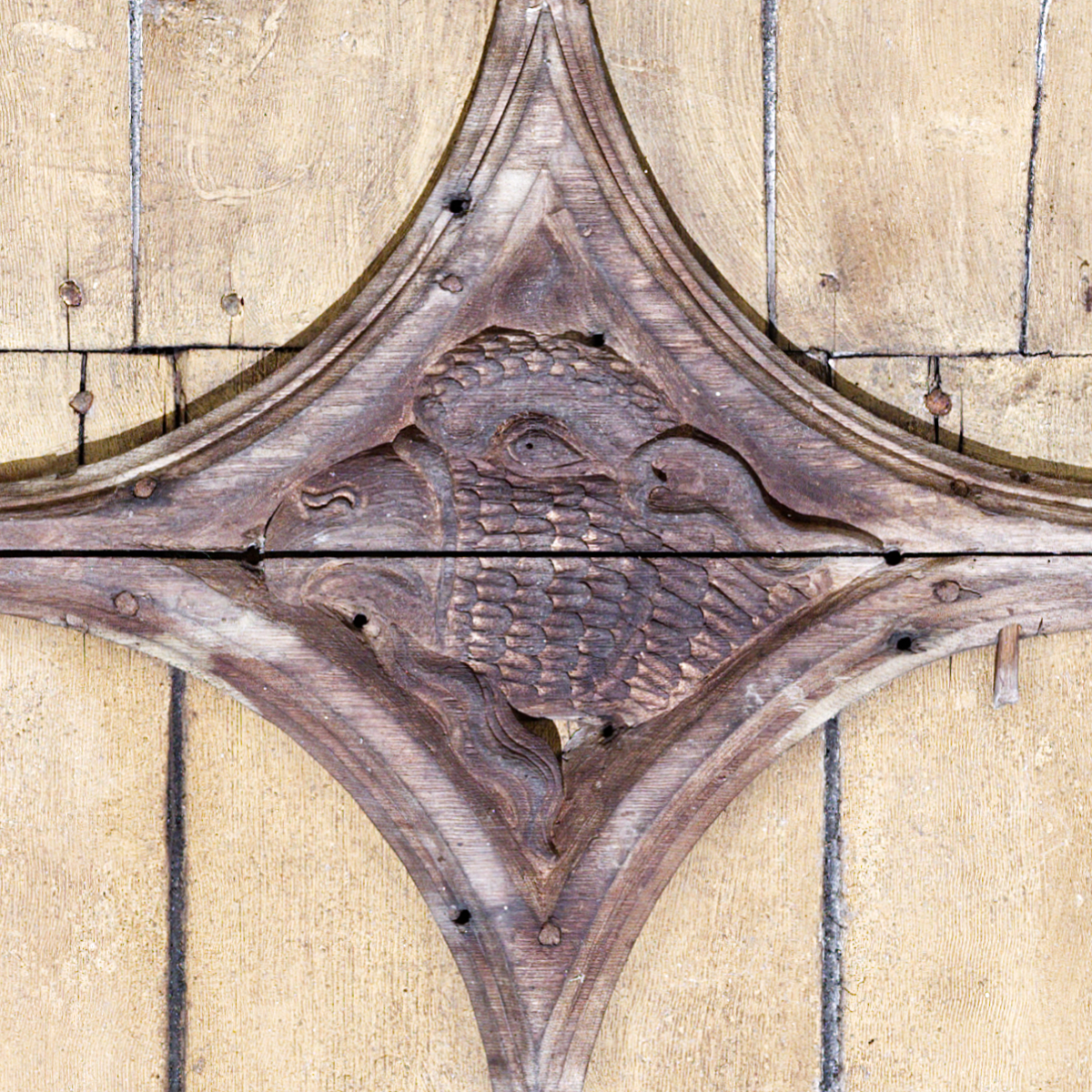
Gryphon
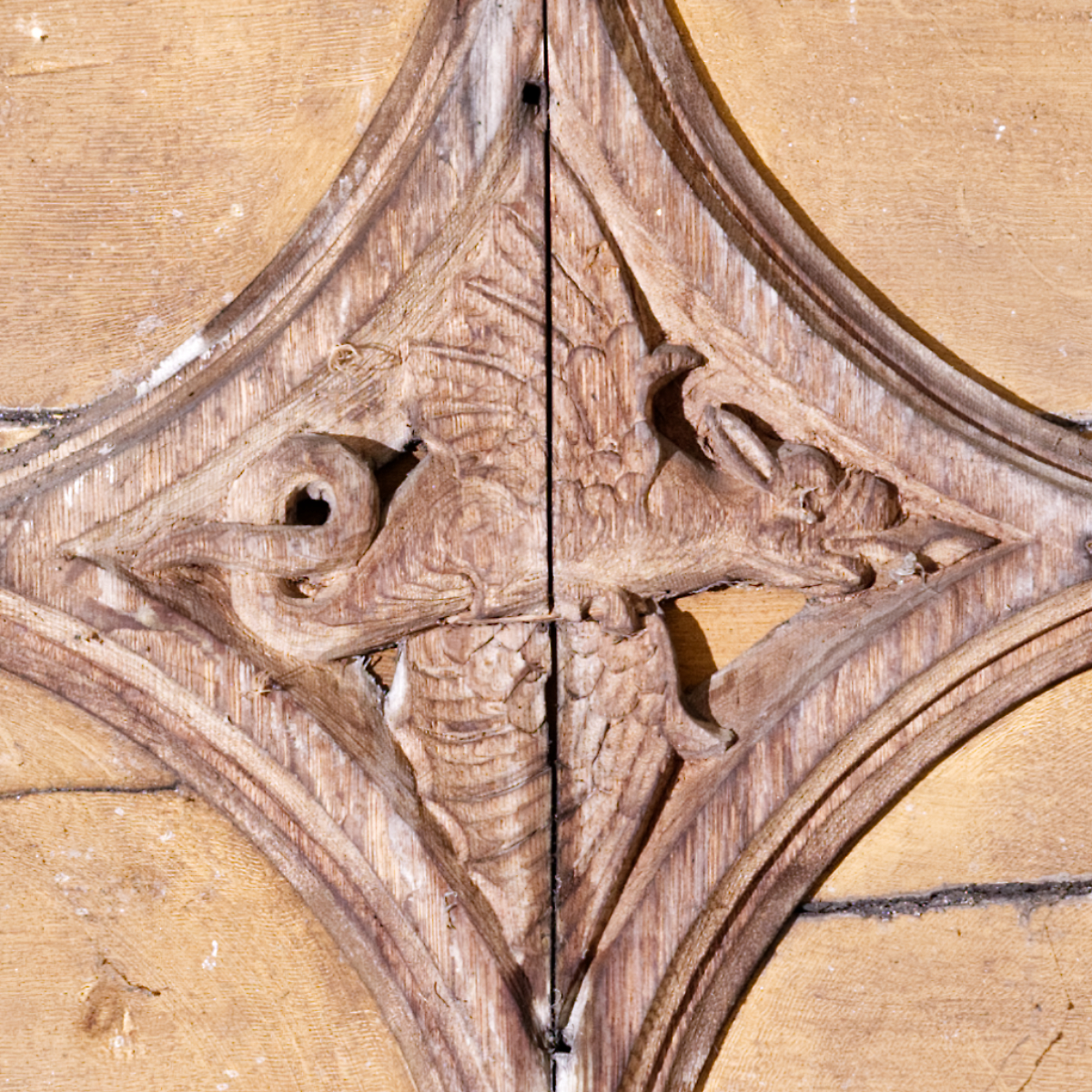
Dragon
7. and a Ducal coronet (SR7 B1 and SR7 CL9).
Some of these are repeated several times on the bosses.
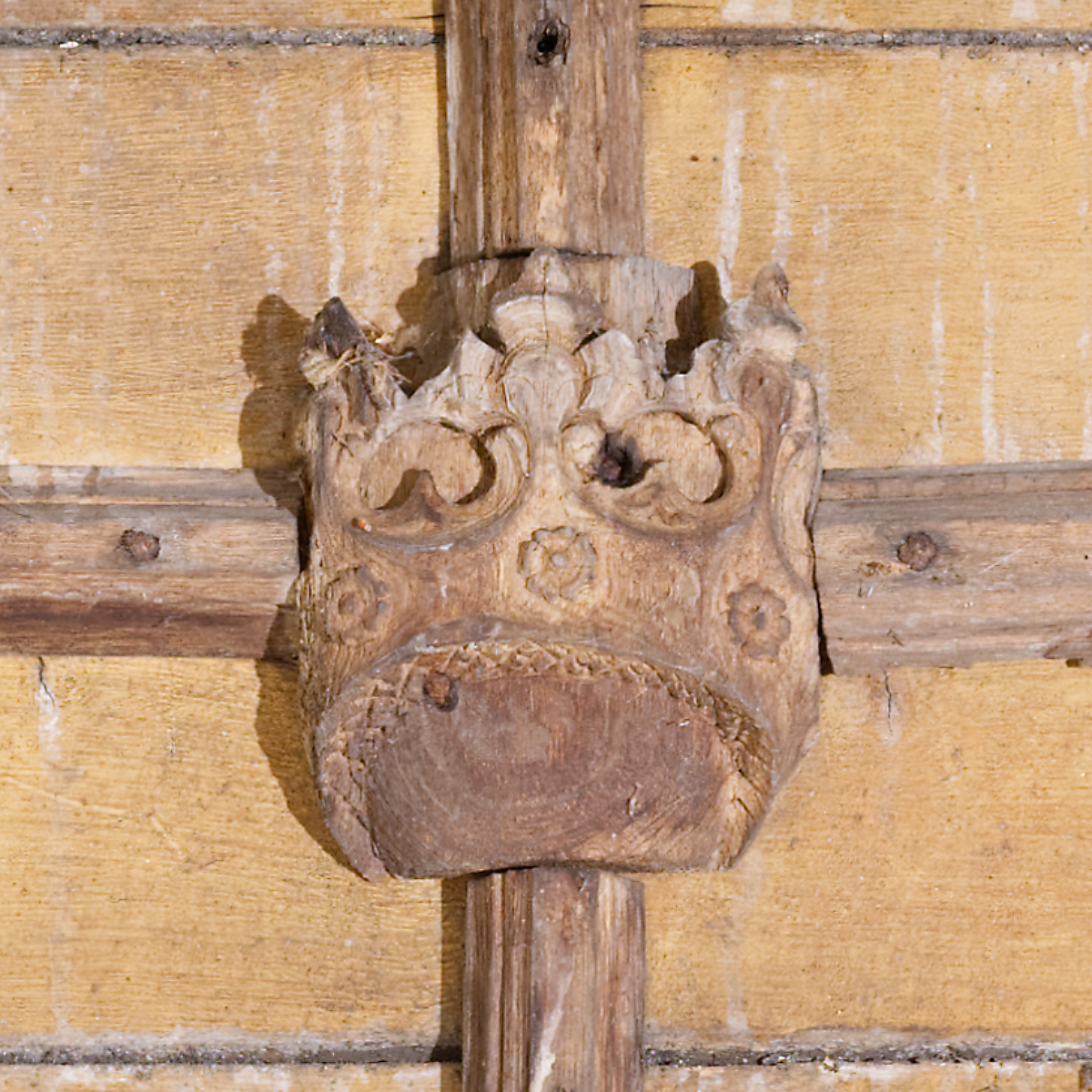
Ducal Coronet
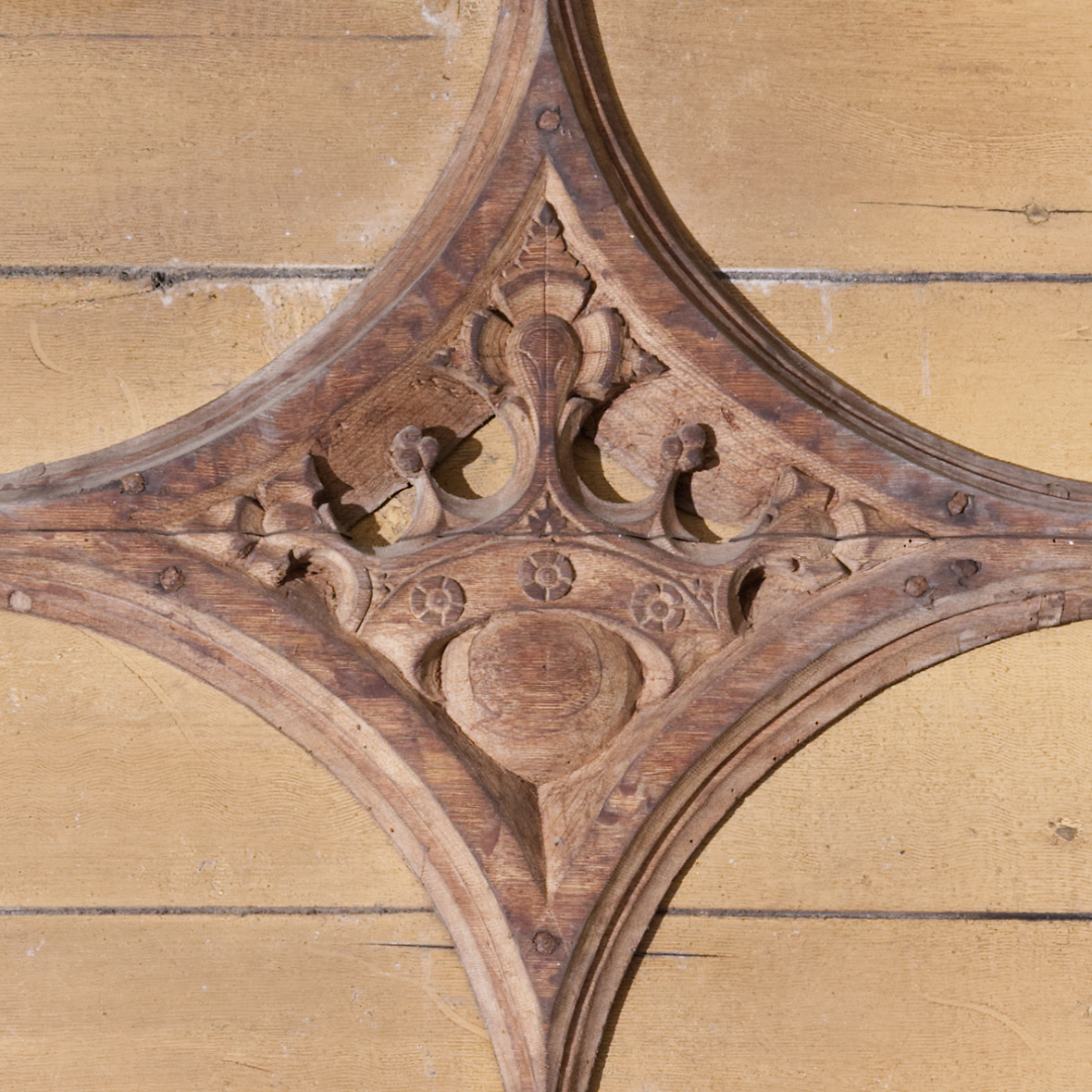
As local Lords of the manor, albeit non- resident, the Stafford’s would want to be involved in the work, to encourage the monks and the people of Gazeley to pray for their soul’s journey from purgatory to heaven. The fact that the carvings cannot be seen clearly from the ground was considered of no consequence at that time.
In addition to the many depictions of lions, a Stafford badge, on the chancel ceiling, on the south wall of the nave there is a sedilia (stone seat) below the window, in which the dividing arm-rest is in the form of a lion. This sedilia dates from circa 1280, before the time of the Staffords, who acquired the manor of Desning Hall in 1347. It is tantalising to think that this could possibly have been fashioned into a lion at a later date, before their installation of the carved ceiling with its multitude of Stafford emblems ?
References:
1. Cautley, H.M. (1938), ‘Suffolk Churches and their Treasures’, (B.T.Batsford)
2. Mortlock, D.P. (2009) ‘The Guide to Suffolk Churches’, (The Lutterworth Press)
3. Bettley, J. and Pevsner, N. (2015) ‘The Buildings of England – West Suffolk’, (Yale University Press)
4. Peverley, S, (2022) Personal communication.
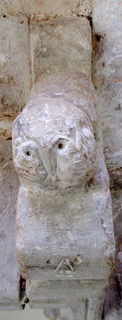
Crudely carved lion